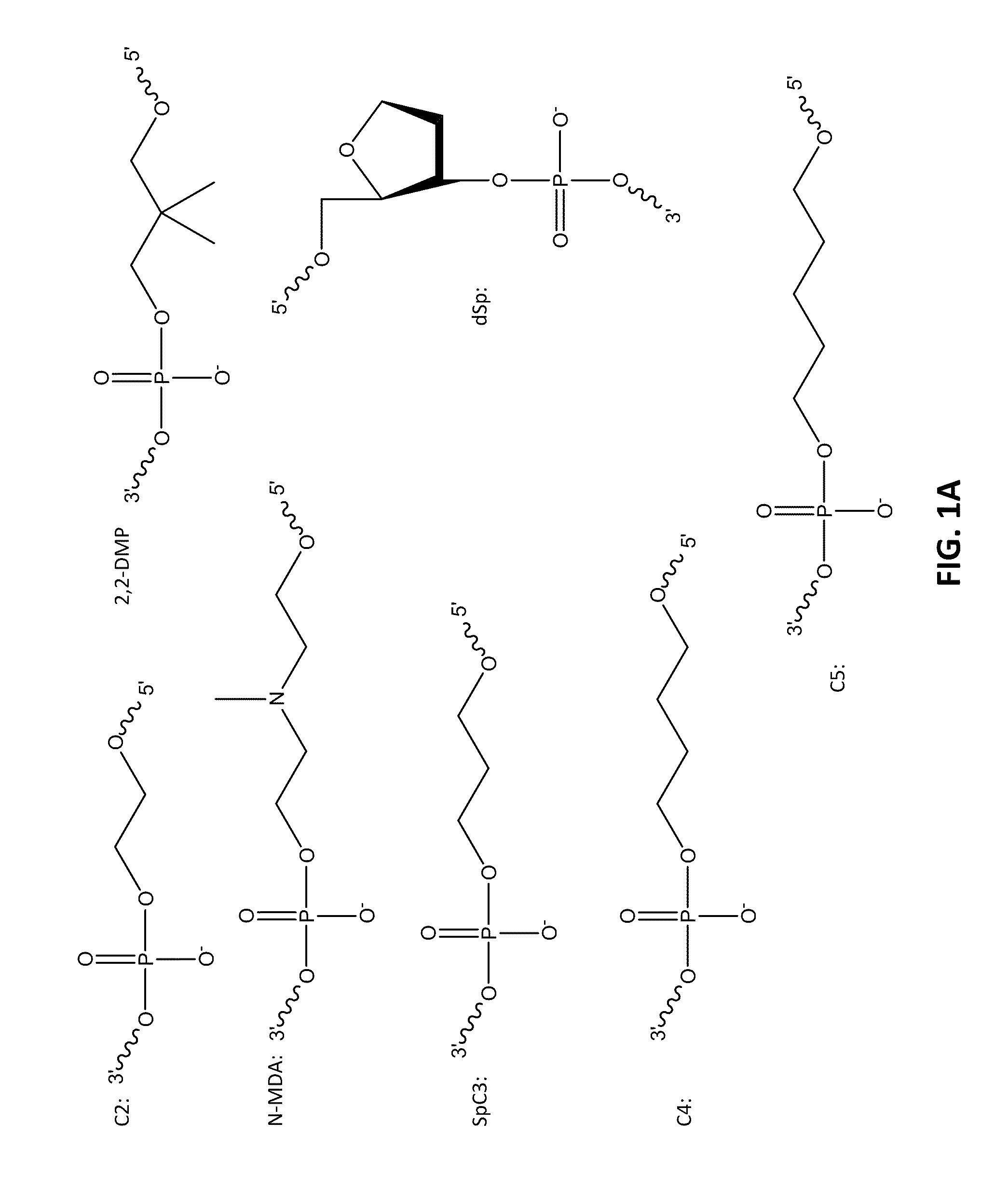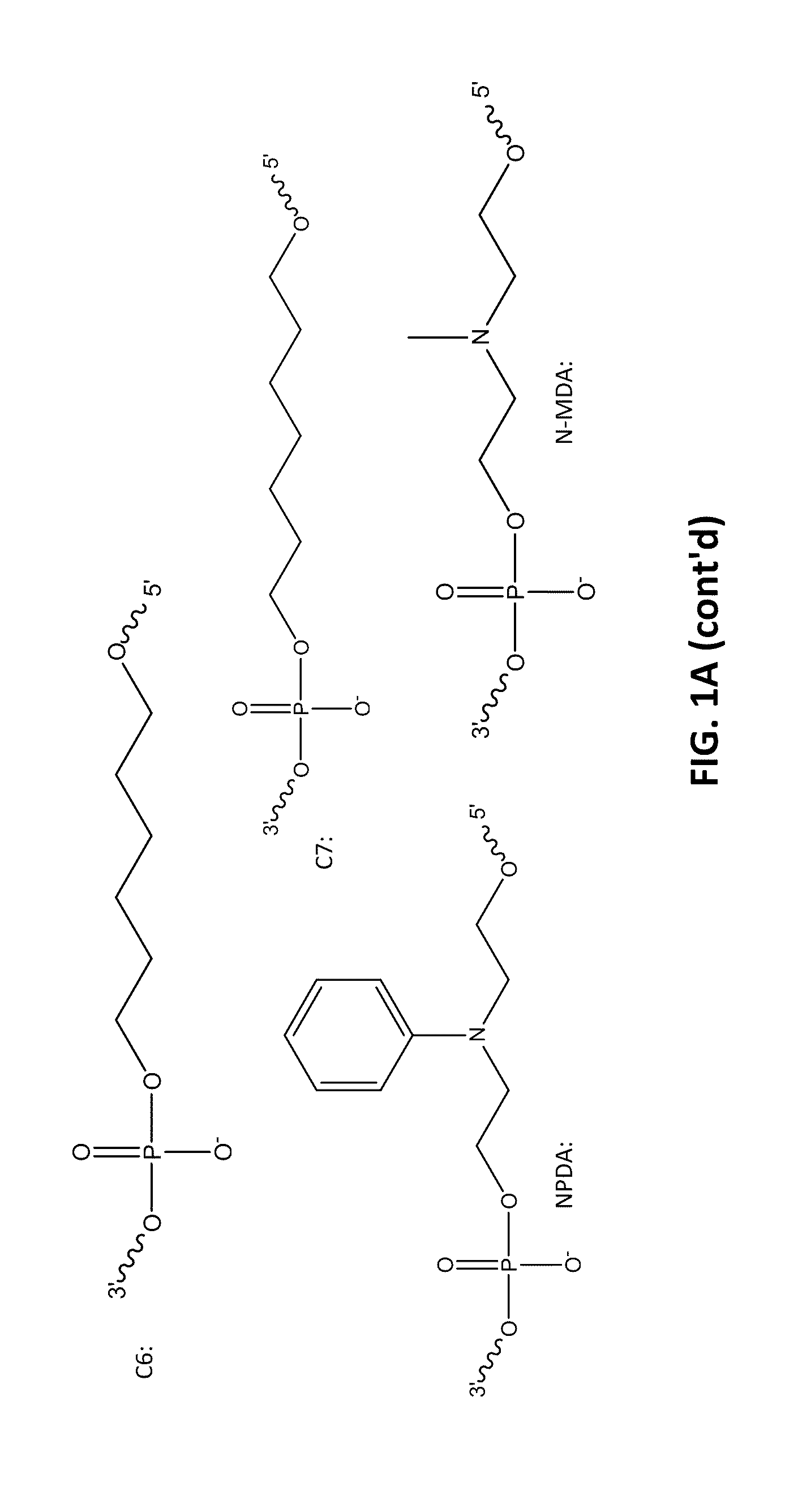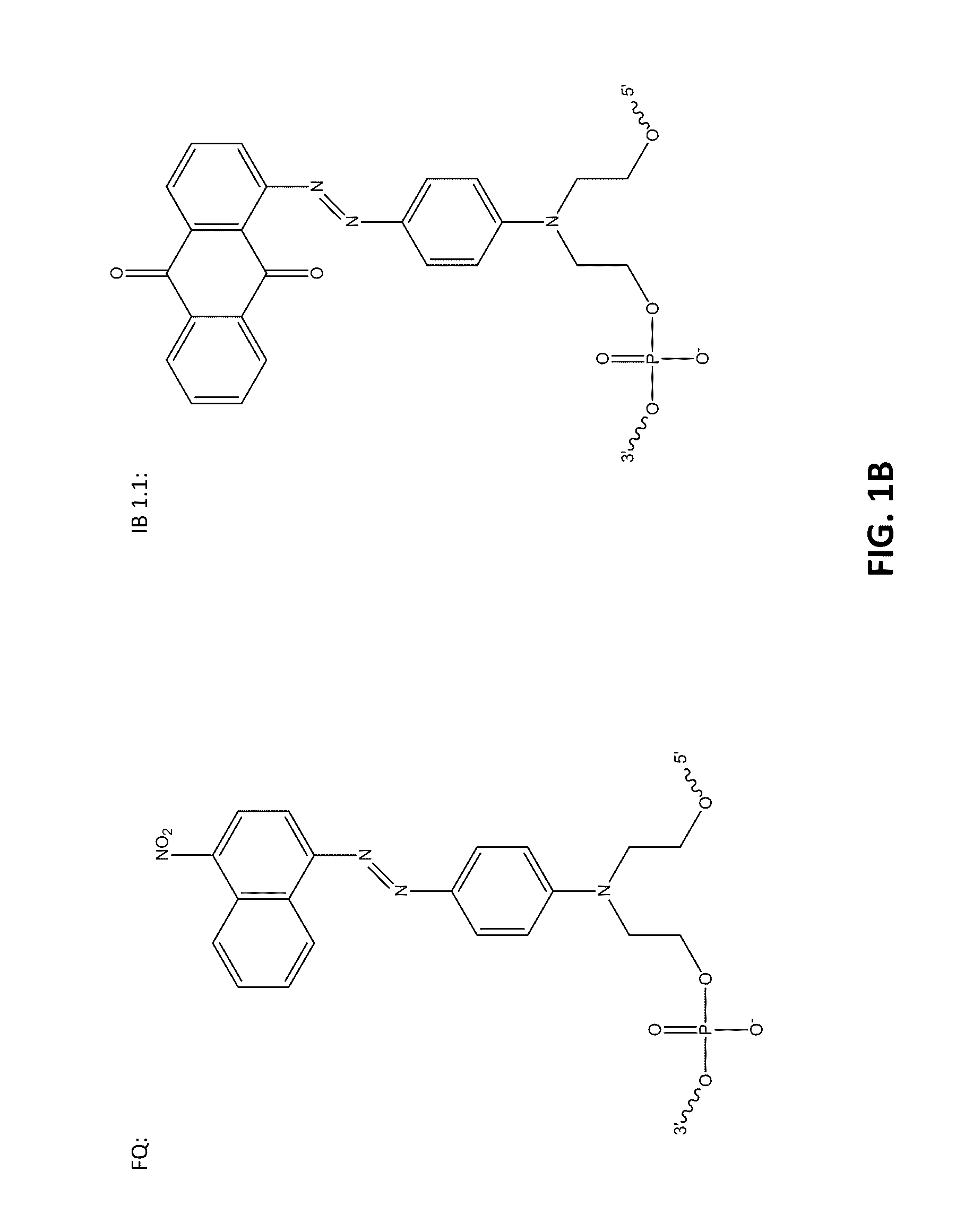Methods for enhancing nucleic acid hybridization
a nucleic acid hybridization and hybridization technology, applied in the field of new oligonucleotide compounds, can solve the problems of difficult design of probes that utilize frets, increase the distance between donors and quenchers, and detectable increase in donor fluorescent signals, so as to achieve high quenching efficiency
- Summary
- Abstract
- Description
- Claims
- Application Information
AI Technical Summary
Benefits of technology
Problems solved by technology
Method used
Image
Examples
example 1
[0086]This example demonstrates the improved stability of probes containing modifications of the present disclosure compared to a selection of other compounds.
[0087]Oligonucleotide synthesis and purification. DNA oligonucleotides were synthesized using solid phase phosphoramidite chemistry, deprotected and desalted on NAP-S columns (Amersham Pharmacia Biotech, Piscataway, N.J.) according to routine techniques (Caruthers et al., Methods Enzymol 1992, 211:3-20). The oligomers were purified using reversed-phase high performance liquid chromatography (RP-HPLC). The purity of each oligomer was determined by capillary electrophoresis (CE) carried out on a Beckman P / ACE MDQ system (Beckman Coulter, Inc., Fullerton, Calif.). All single strand oligomers were at least 90% pure. Electrospray-ionization liquid chromatography mass spectroscopy (ESI-LCMS) of the oligonucleotides was conducted using an Oligo HTCS system (Novatia, Princeton, N.J.), which consisted of ThermoFinnigan TSQ7000, Xcalibu...
example 2
[0098]The following example compares 10 base pair sets of duplexes with varying modification insertions placed at varying location along the 10-mer oligonucleotide. The structures of the modified portions of the various modified oligonucleotides are illustrated in FIGS. 1A-1C. As noted earlier, the synthesis of FQ phosphoramidite is described in Example 10. The structure “IB 1.1” is synthesized in the same manner as FQ except an aminoanthraquinone reagent is used instead of 4-nitro-1-napthylamine. The IB RQ quenchers are anthraquinone-based compounds (U.S. Pat. Application 2004 / 0110308) which are commonly used with red wavelength fluorescent dyes.
[0099]The preparation of the DNA samples, the measurement of melting curves and determination of melting temperatures were performed as in Example 1. Table 3 lists the resulting Tm data for each duplex studied, as well as the ΔTm relative to the duplex formed with the unmodified oligonucleotide.
TABLE 3SEQIDNo.SequenceTmΔTm15′ ATCGTTGCTA43.9...
example 3
[0102]This example details the predictive modeling for oligonucleotides containing an internal quencher.
[0103]The thermodynamic impact of internal FQ azo quencher (iFQ) modification was determined from the difference between modified and native duplex DNAs. Melting experiments were conducted at 2 μM DNA concentration (Ct) and in 1M Na+ buffer. Transition enthalpies (ΔH°) and entropies (ΔS°) where obtain from fits to individual melting profiles (Petersheim, M.& Turner, D. H. (1983) Biochemistry, 22, 256-263). The equilibrium constant Ka was calculated from the fraction of broken base pairs (θ) at each temperature,
Ka=2(1-θ)θ2Ct(1)
[0104]The graphs of −lnKa vs. 1 / T were least-square fit to straight lines and thermodynamic parameters were calculated from the slope and the intercept,
-lnKa=ΔHoRT-ΔSoR(2)
[0105]The fits were limited to the range of θ from 0.15 to 0.85, where θ and Ka are the most accurate. The symbol R is the ideal gas constant (1.9865 cal / (mol*K)). Reported values of ΔH°, an...
PUM
| Property | Measurement | Unit |
|---|---|---|
| wavelength range | aaaaa | aaaaa |
| wavelength range | aaaaa | aaaaa |
| wavelength range | aaaaa | aaaaa |
Abstract
Description
Claims
Application Information
 Login to View More
Login to View More - R&D
- Intellectual Property
- Life Sciences
- Materials
- Tech Scout
- Unparalleled Data Quality
- Higher Quality Content
- 60% Fewer Hallucinations
Browse by: Latest US Patents, China's latest patents, Technical Efficacy Thesaurus, Application Domain, Technology Topic, Popular Technical Reports.
© 2025 PatSnap. All rights reserved.Legal|Privacy policy|Modern Slavery Act Transparency Statement|Sitemap|About US| Contact US: help@patsnap.com



